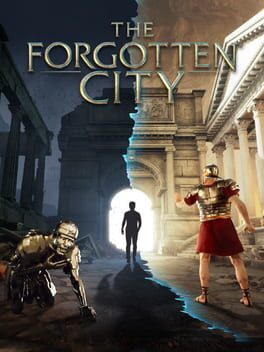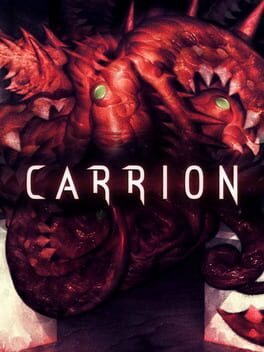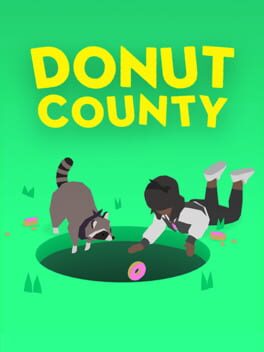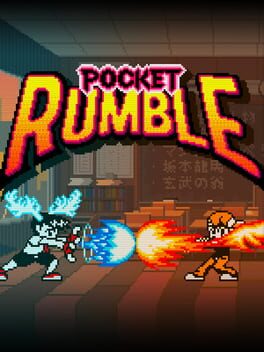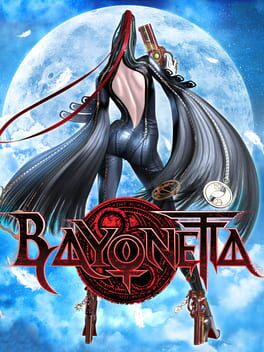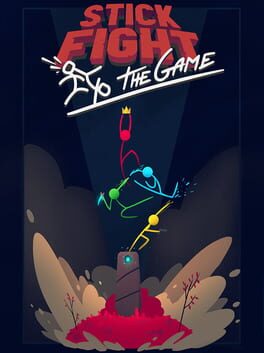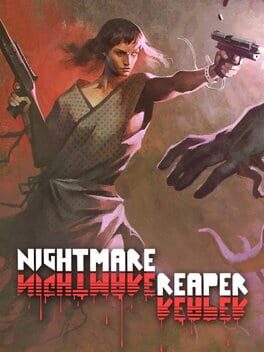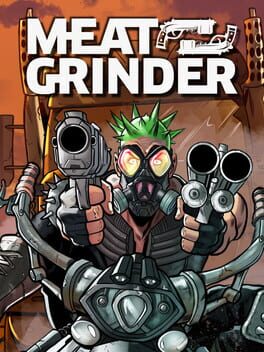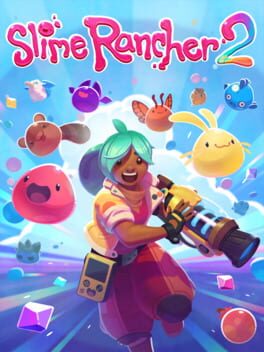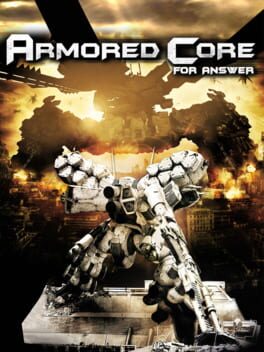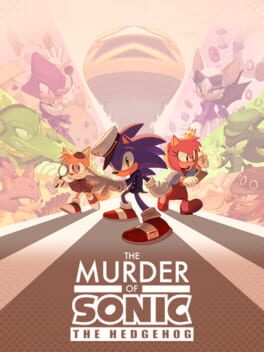AuTomaton
The idea of Anemoiapolis, the eternally expanding beige-carpet nightmare of 80s hotels, is a good one, and the game executes a decent rendition of what such an environment would look like in an explorable 3D space. However, the game misses just about every other mark it aims for. It is too open, too empty, and too insistent on how the player is supposed to feel about the space. Anemoiapolis leaves behind an experience that less than engaging, let alone scary.
There is no meaningful tension build or sense of unease in Anemoiapolis. This isn't really a problem itself, but this lack of tension clashes with character dialogue that suggests an unease and desperation that just isn't there. The emotions engendered by the environment aren't allowed to speak for themselves.
The areas of Anemoipolis are not emotionally interesting either. The best are confusing and unnerving investigations of intentionally difficult spaces, and the rest are just carpet mazes. The game needs to fall about on Backrooms-tier paranormal nonsense to get a genuine rise out of players, which is another strike in the "won't let the environment speak for itself" book.
Anemoiapolis is also really slow to navigate, due to how big the environment is and how slow the player moves. Seeing how Anemoiapolis is an empty set of rooms with little to look at or interact with, walking around gets really boring really fast.
There is no meaningful tension build or sense of unease in Anemoiapolis. This isn't really a problem itself, but this lack of tension clashes with character dialogue that suggests an unease and desperation that just isn't there. The emotions engendered by the environment aren't allowed to speak for themselves.
The areas of Anemoipolis are not emotionally interesting either. The best are confusing and unnerving investigations of intentionally difficult spaces, and the rest are just carpet mazes. The game needs to fall about on Backrooms-tier paranormal nonsense to get a genuine rise out of players, which is another strike in the "won't let the environment speak for itself" book.
Anemoiapolis is also really slow to navigate, due to how big the environment is and how slow the player moves. Seeing how Anemoiapolis is an empty set of rooms with little to look at or interact with, walking around gets really boring really fast.
2021
2020
Carrion's massive strength is the mechanical fantasy of the monster. Movement and interaction in Carrion is awkward and slippery, but it's done to encourage the player to full force towards anything they're trying to do. There is no subtly in movement. You are either lying patiently, motionless, in wait for prey, or you are slamming and thrashing and ripping people limb from limb as you haphazardly slam into walls and drag your innocent victims to their deaths. Carrion disregards common understandings of 'good movement' to elevate its intended experience as high as possible. In this regard, encouraging players to act like a movie monster, Carrion excels.
It's just the rest of the game that's mid. Carrion's levels aren't 'bad', but there's not a lot of variety to them, neither in mechanical ask or visual presentation. There are some areas that try to ask more of the player in terms of movement skill, but because moving through Carrion is intentionally awkward, these areas sometimes ask more of the player's movement skill than the game realistically provides them.
Revisiting older levels is also not an enjoyable experience, given the mazy, one-directional nature of both levels and the Frontier. You're not really supposed to play any part of Carrion backwards, but you need to do so to get at containment units in already finished levels. And because some containment units require upgrades found later in the game, there's no way to get them all as you go. Not having a more straight-forward way to access previous levels is a big blindspot in Carrion's gameplay.
It's just the rest of the game that's mid. Carrion's levels aren't 'bad', but there's not a lot of variety to them, neither in mechanical ask or visual presentation. There are some areas that try to ask more of the player in terms of movement skill, but because moving through Carrion is intentionally awkward, these areas sometimes ask more of the player's movement skill than the game realistically provides them.
Revisiting older levels is also not an enjoyable experience, given the mazy, one-directional nature of both levels and the Frontier. You're not really supposed to play any part of Carrion backwards, but you need to do so to get at containment units in already finished levels. And because some containment units require upgrades found later in the game, there's no way to get them all as you go. Not having a more straight-forward way to access previous levels is a big blindspot in Carrion's gameplay.
2017
Gorogoa presents some very pretty, clever, and even surprising expansions of layered 2D space. Each level almost literally unfolds itself out into a multidimensional painting that forces you to enjoy it only in fleeting passes of specific angles.
Also paced very well for a puzzle game. The journey that the boy goes through as he travels the painting increases in stake as the puzzles increase in difficulty in a way that gently encourages players to think deeper. I really love how the difficulty of the game falls off as the climax of the boy's story comes to a close. It creates a sort of spark of thought as the player finds themselves easily resolving puzzles and paintings that they've seen before.
Also paced very well for a puzzle game. The journey that the boy goes through as he travels the painting increases in stake as the puzzles increase in difficulty in a way that gently encourages players to think deeper. I really love how the difficulty of the game falls off as the climax of the boy's story comes to a close. It creates a sort of spark of thought as the player finds themselves easily resolving puzzles and paintings that they've seen before.
2018
2016
2009
So simple that it almost isn't there, but hits all the major party game points. Stick Fight is easy to play, has gimmicky (and plausibly deniable) win conditions, and fits a ton of players. Extra points for having the game flow infinitely without tons of pausing; that kind of flow makes long sessions with tons of people quite easy.
2019
Not much to say about Nightmare Reaper. It's got a lot of features in it, and boy they sure are all in this video game. I have trouble thinking about this game because despite having so much going on, Nightmare Reaper doesn't create any noteworthy gameplay experiences outside of your standard Rogue-adjacent snowballing. At least, not by hour 13 when I found this dank Fireball Book, like, 2 hubs ago.
I will say that you can taste the Early Access in this one; Nightmare Reapers first third isn't on the same level of quality as the other two. I can't really pin down why, so I'm gonna chalk it up to a lack of narrative development in this first act and the feeling that all the levels are essentially the same. I mean, that last thing is a problem for the whole game, but it's specifically noticeable early when the level generator doesn't vary much between chapters.
Check back in a year, maybe the game gets better after New Game +3 (that is a joke I doubt that will happen).
I will say that you can taste the Early Access in this one; Nightmare Reapers first third isn't on the same level of quality as the other two. I can't really pin down why, so I'm gonna chalk it up to a lack of narrative development in this first act and the feeling that all the levels are essentially the same. I mean, that last thing is a problem for the whole game, but it's specifically noticeable early when the level generator doesn't vary much between chapters.
Check back in a year, maybe the game gets better after New Game +3 (that is a joke I doubt that will happen).
2021
Vampire Survivors is pretty standard as far as snowball semi-idle progression games go. I think it requires a good bit more thought in gameplay than most people give it credit for, especially at higher difficulties, but Vampire Survivors still doesn't ask much from the player. You're ultimately here to watch numbers go up.
Vampire Survivors stands out in its attention to details and its simplicity of progression, two things your average snowball game, especially on mobile, almost always skips.
Each has is unique in its enemy roster and layout. Each stage has its own music. Each stage has it's own alternate visuals for Inverse Mode. Eudaimonia Machine is an actual level, not just a menu. The end credits have a little gag at the end. This game fills out all of its corners with interesting mechanical and artistic details that similar titles would skip. I don't want it to sound like the bar is lower for Vampire Survivors because it's a phone game, I just feel its worth highlighting that Vampire Survivors has artistic effort in it to stand on its own to feet.
What Vampire Survivors does better than most games, what I think its actual strength is, is how "short" it is. Most Roguelite/Roguelike/Snowball/Idle games expect a solid time investment, upwards of 100 hours even, for the game to really start taking off in a way. Until then, a (traditionally) esoteric mechanical progression system is hidden behind very basic progression schemes.
Vampire Survivors, on the other hand, takes at most 50 hours to unlock everything, and even less to 'beat' if you're trying for it. This game's particular strength is that you don't really need to "grind" to unlock most things. Once you have a solid idea of how to get the unlock you're looking for, you just need to start a play session and do it. VS does make you grind some elements, and the way this grinding naturally floats to the being the last things you do in the game leaves a sour taste in the experience, especially once the game is beaten. My interpretation is that this simple unlock schedule was done more for development ease than to intentionally support the player's experience, but I'm still glad that it's there.
So, I'd say Vampire Survivors is a step above its contemporaries, if only that it isn't obsessed with leaching the player's time.
Vampire Survivors stands out in its attention to details and its simplicity of progression, two things your average snowball game, especially on mobile, almost always skips.
Each has is unique in its enemy roster and layout. Each stage has its own music. Each stage has it's own alternate visuals for Inverse Mode. Eudaimonia Machine is an actual level, not just a menu. The end credits have a little gag at the end. This game fills out all of its corners with interesting mechanical and artistic details that similar titles would skip. I don't want it to sound like the bar is lower for Vampire Survivors because it's a phone game, I just feel its worth highlighting that Vampire Survivors has artistic effort in it to stand on its own to feet.
What Vampire Survivors does better than most games, what I think its actual strength is, is how "short" it is. Most Roguelite/Roguelike/Snowball/Idle games expect a solid time investment, upwards of 100 hours even, for the game to really start taking off in a way. Until then, a (traditionally) esoteric mechanical progression system is hidden behind very basic progression schemes.
Vampire Survivors, on the other hand, takes at most 50 hours to unlock everything, and even less to 'beat' if you're trying for it. This game's particular strength is that you don't really need to "grind" to unlock most things. Once you have a solid idea of how to get the unlock you're looking for, you just need to start a play session and do it. VS does make you grind some elements, and the way this grinding naturally floats to the being the last things you do in the game leaves a sour taste in the experience, especially once the game is beaten. My interpretation is that this simple unlock schedule was done more for development ease than to intentionally support the player's experience, but I'm still glad that it's there.
So, I'd say Vampire Survivors is a step above its contemporaries, if only that it isn't obsessed with leaching the player's time.
2023
Wanna watch number go up with your friends?
Early access is early access, so this time next year Crab Champions might be a good bit better. Although, I have a feeling there's not much room to grow with what's already there. But then again, getting into a lobby with your friends is pretty easy so good enough, yeah?
Early access is early access, so this time next year Crab Champions might be a good bit better. Although, I have a feeling there's not much room to grow with what's already there. But then again, getting into a lobby with your friends is pretty easy so good enough, yeah?
2023
Mad Max Clustertruck but you have a gun. It's a pretty short game, but with how solid all of the fundamental mechanics are and with how often the game tries to make levels seamlessly flow into each other, it still paces very well. Big setpiece story beats help break up longer multi-level stretches, so the entire experience still feels 'complete'. It's not the same line of trucks for 45 minutes, its a journey with clear progression not just in mechanical features and difficulty, but also highlighted events, places, and 'people'. And this is only possible because jumping and shooting are both intuitive and easy.
Meatgrinder's real flaw is that it doesn't go beyond mechanical basics to support the gameplay experience. Collision physics, environmental hazard signaling, and the placement and detonation of explosive environment pieces all lack deeper thought in their implementation. A player will begin to butt up against this in edge-case live-or-die scenarios even at lower difficulties.
To me, it feels like Meatgrinder received the minimum amount of artistic attention in any given area. There's enough to clearly communicate the intended fantasy without compromising the fun of the game, and that's it. But because there's nothing thrown into Meatgrinder that is unnecessary, the experience is overall more enjoyable than a game that might be longer or larger. Meatgrinder delivers on everything it wants to do, no more, no less, in 45 minutes flat, and it's a damn good time too.
Meatgrinder's real flaw is that it doesn't go beyond mechanical basics to support the gameplay experience. Collision physics, environmental hazard signaling, and the placement and detonation of explosive environment pieces all lack deeper thought in their implementation. A player will begin to butt up against this in edge-case live-or-die scenarios even at lower difficulties.
To me, it feels like Meatgrinder received the minimum amount of artistic attention in any given area. There's enough to clearly communicate the intended fantasy without compromising the fun of the game, and that's it. But because there's nothing thrown into Meatgrinder that is unnecessary, the experience is overall more enjoyable than a game that might be longer or larger. Meatgrinder delivers on everything it wants to do, no more, no less, in 45 minutes flat, and it's a damn good time too.
2022
Putting aside the cultural ramifications of a Sonic the Hedgehog April Fool's joke game that is still the best Sonic game to come out since Mania, The Murder of Sonic the Hedgehog is, really, quite good. The murder mystery is engaging and has good sidepaths and leads. The runner game well designed, and the levels for it actually ask the player to think about their play and make meaningful decisions. Do you jump to keep yourself safe and lose out on the rings on the ground while you wait to fall? I'd guess that the runner wouldn't hold together under extended play, but the game lasts an hour so that's totally fine. In fact, I'd say it's a positive: I feel like I got to experience the full breadth of that minigame in one playthrough.
While I have some gripes about smaller art choices (the fonts are kinda weird and there are editing mistakes in the text) the key are and music are all very high quality. They communicate the personalities and importance of each character while still staying in the murder party aesthetic. Sonic characters are a strong suit, this game uses them really well!
Great work! Well done! Please someone ping me when the runner music gets posted on Siivagunna with a Death Grips remix!
While I have some gripes about smaller art choices (the fonts are kinda weird and there are editing mistakes in the text) the key are and music are all very high quality. They communicate the personalities and importance of each character while still staying in the murder party aesthetic. Sonic characters are a strong suit, this game uses them really well!
Great work! Well done! Please someone ping me when the runner music gets posted on Siivagunna with a Death Grips remix!

